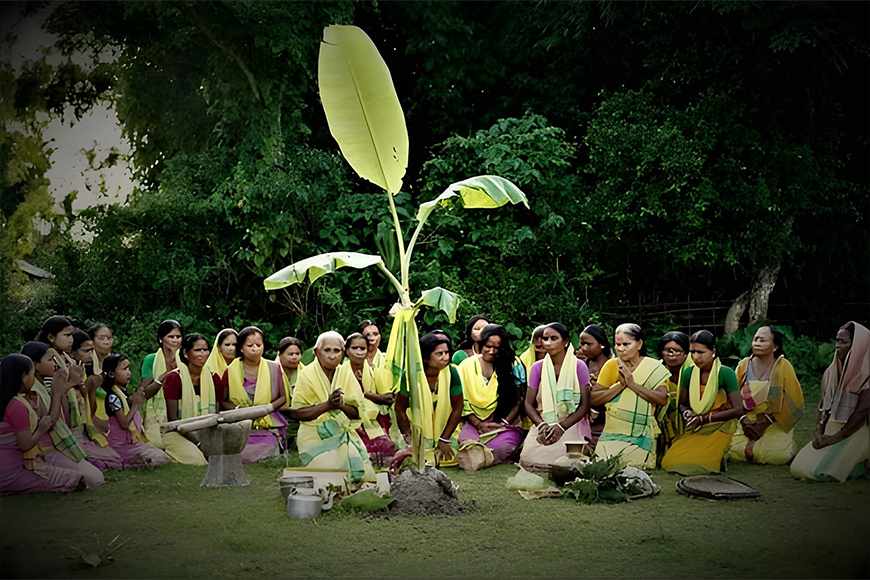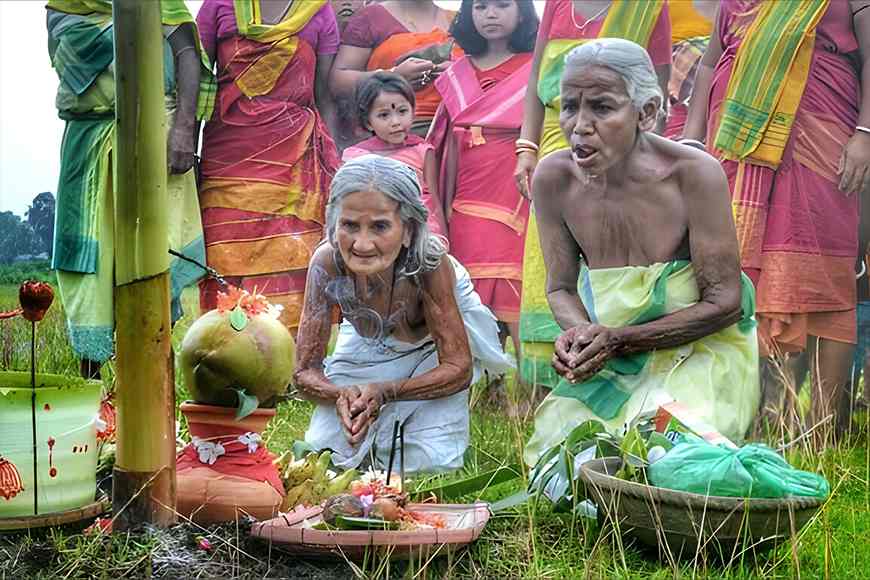Hudum Deo Puja: Rajbangshi women dance in nude to invoke rain— GetBengal story

When the whole world is advancing with science and technology, some sections of North Bengal still preserve their ancient cultural practices. Hudum Deo Puja and Hudum Dance are among the most notable traditional rituals and indigenous art forms practiced by the Rajbangshi community, which is rooted in North Bengal and certain parts of northeastern India.
Only women perform the Hudum Puja and dance. They do it far away from their homes and without clothes, as part of the old tradition. This puja is done to bring rain and to stop long dry seasons.
As per the mythological belief of Koch-Rajbangshi, Hudum Deo/Deva, the God of Rain, is the son of Indradev and Basumati. The word “Hudum” is believed to have originated by adding the sound “Ha” to “Udam” or “Uhum,” later evolving into “Deo” or “Deva,” meaning deity. Some interpretations also suggest “Hu” represents fire and “Dum” means to suppress, symbolizing the act of controlling drought and bringing rain.

The puja is traditionally conducted between the months of May and July, on Tuesdays and Saturdays. Open fields or riverbanks are chosen to perform the ritual, which must be far from the homes. A week before the puja, seven unmarried women collect water and soil from seven different homes to perform the rituals. Then a banana tree is installed, symbolizing Hudum Deo/Deva. The banana tree must be set by an Ekushiya, which means a woman who has only one child. The rules and rituals of this puja strongly reflect the deep connection of Rajbangshis to fertility, agriculture, and natural cycles.
As part of the puja’s ritual, women dance naked around the symbolising Hudum Deo, which is the banana tree, and no male is allowed other than a drummer with a blindfold. The songs performed contain provocative and obscene words, which the community believes are meant to appease Hudum Deo/Deva. During the performance, the puja is conducted in very dim light to maintain privacy, prevent outsiders from seeing, and to adhere to tradition.
The ritual not only serves religious purposes but also promotes social welfare. By performing Hudum Deo, women contribute to community well-being by invoking rainfall essential for crops. Historical accounts also show Muslim women participating, emphasizing the inclusive and harmonious nature of this practice.
In essence, Hudum Deo is a vital folk tradition of North Bengal, representing the Rajbangsi people’s cultural identity, artistic expression, and environmental consciousness. Through this ritual, dance, and music, the community maintains a living connection to nature, divine belief, and collective welfare, preserving a centuries-old heritage.










